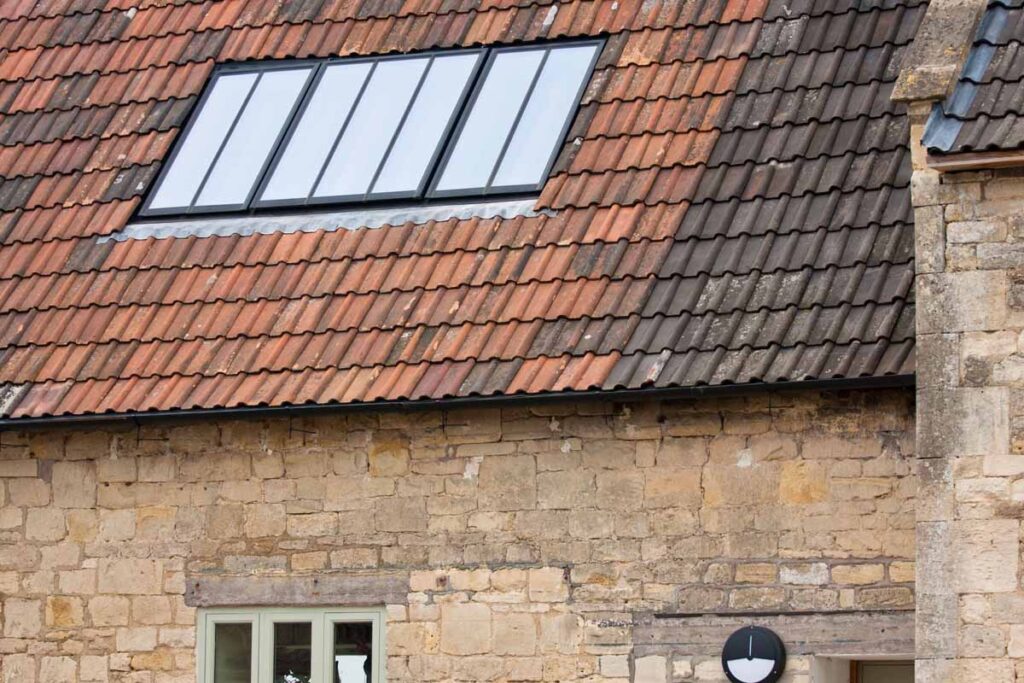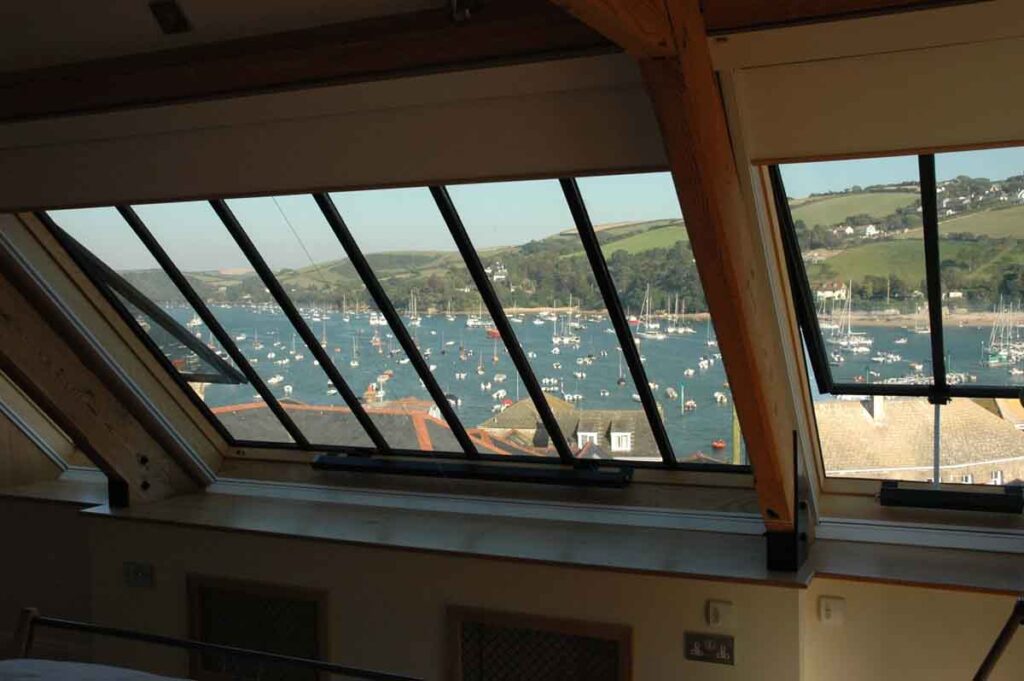


If you’ve already researched and know you need conservation rooflights for your project, you probably found various options online. So, what exactly is a conservation rooflight, and are they all the same?
The history of this sort of glazing and the reasons for its popularity in period homes and contemporary builds are essential to comprehend what makes a rooflight a conservation style.
The idea of converting an unusual area into a bright home would be frightening without the innovative invention of the rooflight. Hence, the conservation rooflight might be regarded as a hugely influential architectural element, as it has provided the construction industry with a means of bringing in natural light.
Although rooflights (or skylights) have been present for millennia, they took off in the Victorian era as technology advanced and architectural ambitions were raised. The Crystal Palace, constructed in 1851, was one of the most well-known Victorian buildings. It included expansive panes of glass to demonstrate what could be accomplished at the time.
Mass-produced Rooflights in Victorian homes were frequently fabricated from cast iron, and early examples had thinner, less substantial panes of glass. In addition to technological constraints, excise charges based on glass weight introduced in the middle of the 18th century also contributed to the shortage. These multi-paned glass rooflights were narrow and flat, so they didn’t protrude from the roof at all. Nowadays, many individuals aim for this sleek minimalism in their glazing projects.
As a result of their widespread use, numerous manufacturers have released conservation roof windows into the market, making it challenging to select the best option without first learning how to dissect the various options. Identifying what makes a rooflight a “real” duplicate of a Victorian conservation rooflight is a valuable technique.
The ideal profile for a simple conservation design would be low and sleek, like a roof. Many skylight manufacturers aim to make conservation rooflights with modern, hefty aluminium profiles that protrude from the roof. Steel is the go-to material for genuine conservation rooflights thanks to its high strength, low profile, and high glass-to-frame ratio.
Wide varieties of steel conservation rooflights exist, but only rooflights made with a HYPER TENSILE coating offer the same level of protection and longevity.
Tuscan skylights have authentic wooden interiors. With ash as the most popular option, we can make it out of any wood you need. The inside component of your conservation rooflight will look sleek and cosy thanks to natural wood.

Rooflight manufacturers and retailers typically utilise softer woods or plastics with a white-painted inside finish, which might lead to deeper frame profiles or smaller viewing areas because of the liners. While white internal frames are typically associated with modern flat rooflights rather than classic conservation items, their sterile appearance is a selling point.
Single glazing was typical for Victorian rooflights, but modern construction standards are far more stringent; therefore, single glazing no longer suffices (Part L). Because of advancements in glazing technology, current double-glazed units can give various benefits while still being very slim, making them the most popular choice for genuine conservation rooflights. Tuscan conservation rooflight units have a self-cleaning outer pane, solar control features, and a Quantitherm One inner pane for superior thermal efficiency. Our silicone-edge-sealed units feature warm-edge spacer technology and argon gas for increased resistance to UV rays.
While triple glazing does give a slightly better thermal performance, it does so at the price of beauty, which is why some conservation rooflight suppliers are quick to talk about it. Every decent triple-glazed unit will be over 50% thicker than a double-glazed one due to the optimal spacer bar thickness of 16mm. Although a flush-fitting profile was once a primary condition for a conservation rooflight, triple glazing has rendered this nearly impossible for several roof types.

To maintain the authentic Victorian aesthetic, the conservation officer may typically insist on a glazing bar in a conservation rooflight. Getting conservation rooflights may only sometimes be necessary, but it’s wise to double-check before making a purchase.
A real glazing bar should be used if a conservation rooflight calls for one. Here you can tell the difference between manufacturers making authentic-looking reproductions of Victorian rooflights and those trying to pass off contemporary skylights as antique. For something to be considered a “glazing bar,” it must do more than just separate the panes of glass; it must also reinforce the casement. Many rooflights installed for conservation purposes have unsightly additions affixed to the exterior glass using glue or adhesive., a viable option for making a modern rooflight with a bulky framed profile suitable for a historic building.
Again, a top-hung profile will be used if you want a close imitation of a Victorian rooflight. With a top-hung style, the casement doesn’t protrude into the room, creating additional floor space below. While modern plastic knobs are out of reach and add little to the interior decor, smaller top-hung rooflights use lovely brass ironmongery to control the casement.
Although these products may be advertised as “conservation rooflights,” not all construction styles can benefit. The conditions for adopting conservation rooflights are significantly stricter if your building is Listed or in a conservation area. You should always acquire approval, not just for their usage but also for the manufacturer you wish to use.
You should also enquire about how long the supplier or manufacturer has been trading, and because of the complexity of the product, you should avoid poorly experienced manufacturers.
To help the UK achieve its carbon-neutral goal, every effort must be made to cut energy use. Since they allow in so much natural light, roof windows save energy by minimising the need for artificial lighting. Increasing the amount of natural light in your house has many benefits, including improved mood, reduced stress, and a reduced risk of disease.
Increasing the size of your rooflights is one method to do this, but is this the best option? You should constantly check what the finished visible (commonly referred to as evident viewable) area of the rooflight will be to provide adequate lighting, as this is not necessarily the case even if you have a large rooflight. If the frame of a conservation rooflight is 900 millimetres wide and 1200 millimetres high, you might assume that all such rooflights have the same clear viewable area. However, this is not the case; rooflights with thick, modern frames or flat rooflights disguised as pitched conservation styles admit much less light.
Finding the best conservation rooflight among the many options can be challenging but not impossible, with some expert help. Tuscan’s conservation rooflight features meticulous design and construction; by comparison, no other conservation rooflight on the market matches ours in terms of quality and efficiency. We have always worked towards producing the most attractive and effective conservation rooflight available.
We understand that you place a high value on quality and that mistakes aren’t an option for you, whether starting from scratch, updating an existing space, or adding on to increase capacity.
Every single one of our rooflights is made using the highest quality components available. Our rooflights come standard with a natural wood interior finish and are made from Hyper Tensile steel and a marine-grade paint coating (C5 application). No other provider of conservation rooflights meets the standards set by this company.